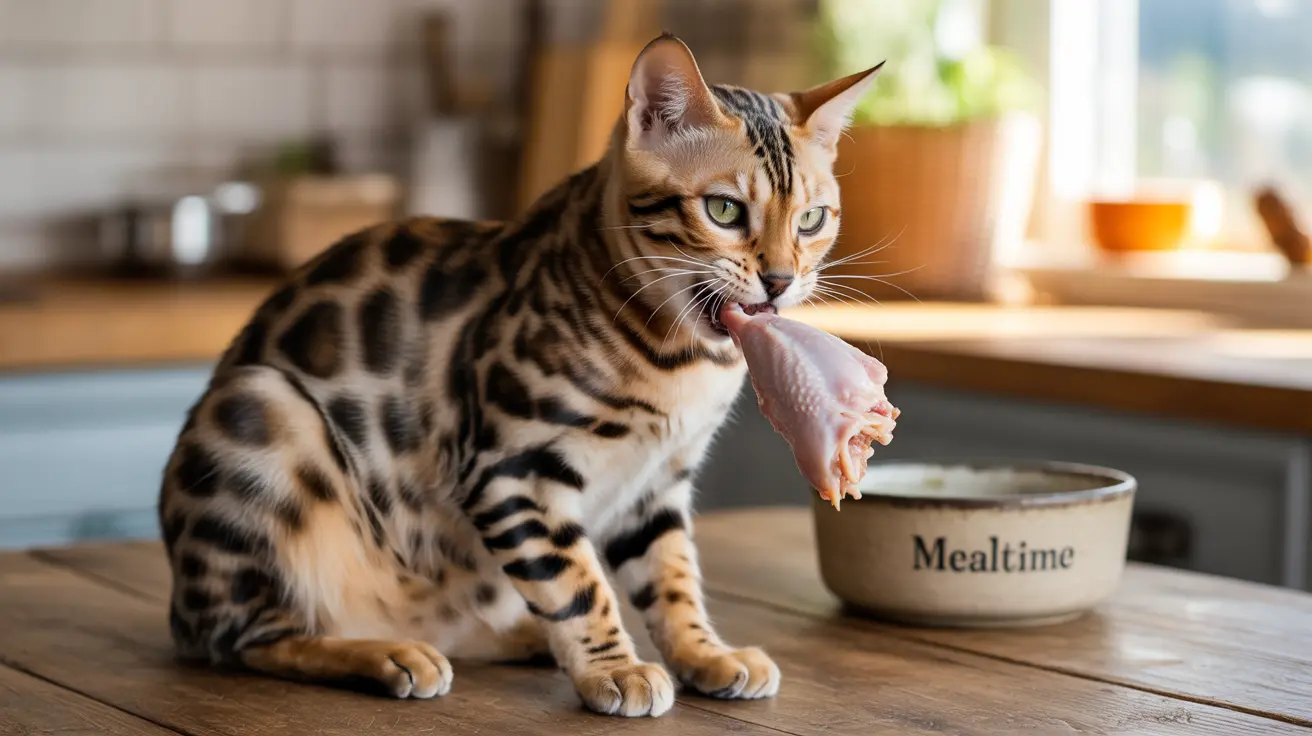As a cat owner, you may have wondered whether it's safe to feed your feline friend chicken bones. While cats in the wild naturally consume bones as part of their prey, the safety of feeding chicken bones to domestic cats requires careful consideration. This comprehensive guide will explore the risks and benefits of feeding raw chicken bones to cats, along with essential safety guidelines every pet owner should know.
Understanding the crucial difference between raw and cooked chicken bones can literally be a matter of life and death for your cat. Let's dive into what you need to know to make informed decisions about including bones in your cat's diet.
The Safety of Raw vs. Cooked Chicken Bones
Raw chicken bones can be safe for cats when properly selected and prepared. They're naturally pliable and less likely to splinter compared to their cooked counterparts. Small, raw bones like chicken necks and wings are particularly suitable as they match a cat's natural ability to chew and digest bone material.
However, cooked chicken bones are extremely dangerous and should never be fed to cats. The cooking process makes bones brittle and prone to splintering, creating sharp fragments that can cause serious internal injuries.
Nutritional Benefits of Raw Chicken Bones
Raw chicken bones offer several nutritional advantages for cats. They're an excellent source of calcium and phosphorus, essential minerals for maintaining healthy bones and teeth. The natural chewing action required to consume raw bones also provides dental benefits, helping to prevent tartar buildup and promote oral health.
Additionally, chicken bones contain marrow, which provides valuable nutrients and can serve as a natural source of entertainment and mental stimulation for your cat.
Safe Feeding Guidelines and Precautions
If you decide to feed your cat raw chicken bones, following these safety measures is crucial:
- Always supervise your cat while they eat bones
- Choose appropriately sized bones for your cat's mouth
- Source bones from reputable suppliers
- Store and handle raw bones properly to prevent bacterial contamination
- Introduce bones gradually into your cat's diet
- Never feed cooked bones of any kind
When to Avoid Chicken Bones
Certain cats should not be given raw chicken bones, including:
- Cats with dental problems
- Senior cats with weakened teeth
- Cats with compromised immune systems
- Cats with digestive issues
- Cats on special diets prescribed by veterinarians
Signs of Trouble to Watch For
Monitor your cat closely after feeding bones and watch for these warning signs:
- Choking or gagging
- Vomiting or retching
- Lethargy or unusual behavior
- Loss of appetite
- Constipation or difficulty defecating
- Bloody stool
Frequently Asked Questions
Can cats safely eat raw chicken bones, and which types are best to feed?
Yes, cats can safely eat raw chicken bones, particularly smaller ones like chicken necks and wings. These bones are naturally sized for cats and are less likely to cause choking or digestive issues. Always choose fresh, high-quality bones from reliable sources.
Why are cooked chicken bones dangerous for cats, and what health risks do they pose?
Cooked chicken bones are dangerous because they become brittle and can splinter into sharp fragments. These splinters can cause choking, puncture the digestive tract, or create blockages that require emergency surgery.
What are the nutritional benefits of feeding raw chicken bones to cats?
Raw chicken bones provide essential calcium and phosphorus, support dental health through natural cleaning action, and contain bone marrow rich in nutrients. They also offer mental stimulation and satisfy natural chewing instincts.
How can I safely introduce raw chicken bones into my cat's diet without risking choking or infection?
Start by offering small portions of raw chicken necks or wings under close supervision. Ensure the bones are fresh and properly stored. Introduce them gradually and monitor your cat's reaction. Always practice good hygiene when handling raw meat.
What signs should I watch for if my cat accidentally swallows a cooked chicken bone?
Watch for signs of distress such as choking, gagging, vomiting, lethargy, loss of appetite, or difficulty defecating. If you notice any of these symptoms, contact your veterinarian immediately for guidance.
Remember to always consult with your veterinarian before making significant changes to your cat's diet, including the introduction of raw chicken bones. While they can be a healthy addition to your cat's diet when handled properly, safety should always be your top priority.






